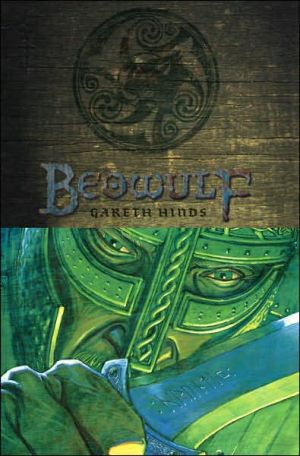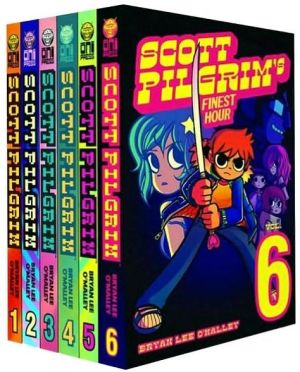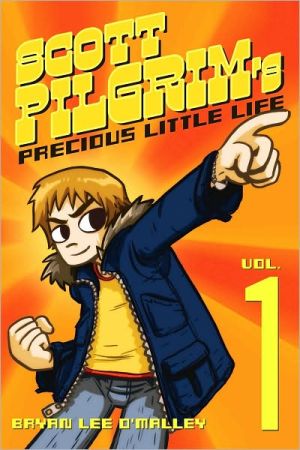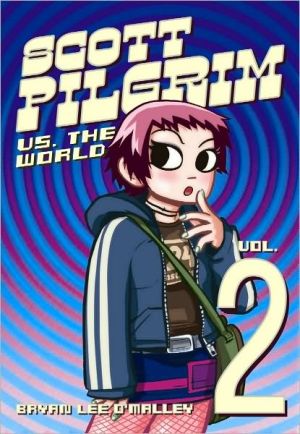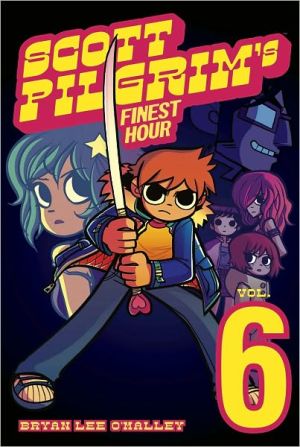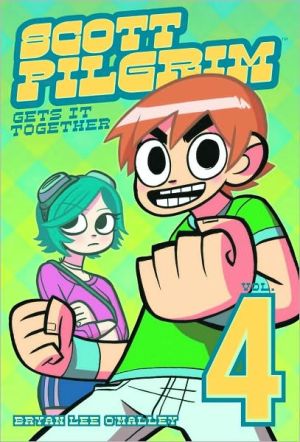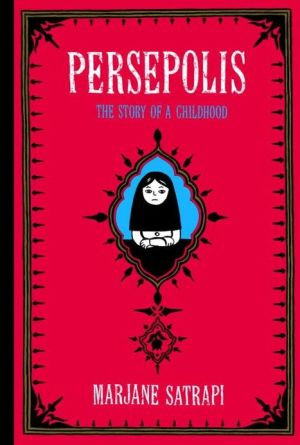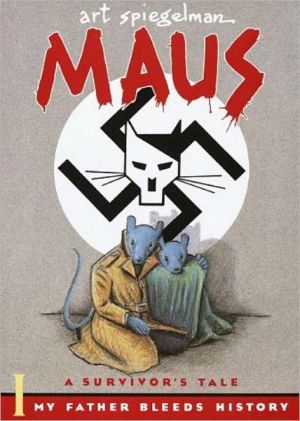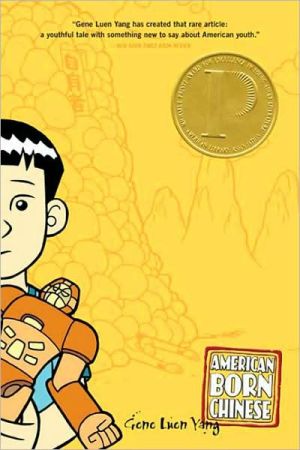Beowulf
This exhilarating graphic-novel edition of an ancient classic honors the spirit of the original as it attracts modern readers.\ The epic tale of the great warrior Beowulf has thrilled readers through the ages — and now it is reinvented for a new generation with Gareth Hinds’s masterful illustrations. Grendel’s black blood runs thick as Beowulf defeats the monster and his hideous mother, while somber hues overcast the hero’s final, fatal battle against a raging dragon. Speeches filled with...
Search in google:
This exhilarating graphic-novel edition of an ancient classic honors the spirit of the original as it attracts modern readers.The epic tale of the great warrior Beowulf has thrilled readers through the ages — and now it is reinvented for a new generation with Gareth Hinds’s masterful illustrations. Grendel’s black blood runs thick as Beowulf defeats the monster and his hideous mother, while somber hues overcast the hero’s final, fatal battle against a raging dragon. Speeches filled with courage and sadness, lightning-paced contests of muscle and will, and funeral boats burning on the fjords are all rendered in glorious and gruesome detail. Told for more than a thousand years, Beowulf’s heroic saga finds a true home in this graphic-novel edition.Publishers WeeklyThe king of heroic epics gets a lavish visual interpretation in Hinds's full-color mixed-media gem, originally self-published as three separate issues in 2000. He begins with a credit to two versions of the familiar story (A.J. Church's 1904 translation and that of Francis Gummere), in which a vicious monster named Grendel terrorizes the great hall of King Hrothgar for 12 winters, and the hero Beowulf arrives from afar, to try to defeat the creature and succeeds with his bare hands. Then he must contend with Grendel's mother, when she comes to avenge her son's fate; the third chapter deals with the mournful end to the hero's life, resulting from a battle with an enormous dragon. Each chapter begins with a brief narrative (paying homage to the cadences of the story's early verse renditions), before giving way to a lengthy, wordless and bloody battle. Hinds's angular perspectives and unusual color palettes (dark, ruddy colors, deep burgundy blood, and not a ray of sunshine in sight) lend the book an almost overwhelming sense of menace. The third and most emotionally forceful chapter centers around an incredible two-page spread that shows the dragon awakening; it's an arresting image in a book filled with many. For fantasy fans both young and old, this makes an ideal introduction to a story without which the entire fantasy genre would look very different; many scenes may be too intense for very young readers. Ages 10-up. (Apr.)Copyright 2007 Reed Business Information
\ Publishers WeeklyThe king of heroic epics gets a lavish visual interpretation in Hinds's full-color mixed-media gem, originally self-published as three separate issues in 2000. He begins with a credit to two versions of the familiar story (A.J. Church's 1904 translation and that of Francis Gummere), in which a vicious monster named Grendel terrorizes the great hall of King Hrothgar for 12 winters, and the hero Beowulf arrives from afar, to try to defeat the creature and succeeds—with his bare hands. Then he must contend with Grendel's mother, when she comes to avenge her son's fate; the third chapter deals with the mournful end to the hero's life, resulting from a battle with an enormous dragon. Each chapter begins with a brief narrative (paying homage to the cadences of the story's early verse renditions), before giving way to a lengthy, wordless and bloody battle. Hinds's angular perspectives and unusual color palettes (dark, ruddy colors, deep burgundy blood, and not a ray of sunshine in sight) lend the book an almost overwhelming sense of menace. The third and most emotionally forceful chapter centers around an incredible two-page spread that shows the dragon awakening; it's an arresting image in a book filled with many. For fantasy fans both young and old, this makes an ideal introduction to a story without which the entire fantasy genre would look very different; many scenes may be too intense for very young readers. Ages 10-up. (Apr.)\ Copyright 2007 Reed Business Information\ \ \ \ \ KLIATT - George Galuschak\ There is a scene in Gareth Hinds's Beowulf when our hero dives into a lake to battle a monster. As the warriors at the lake's edge watch, horrified, the waters turn blood-red. Beowulf bursts to the surface, severed sword held high, the monster's decapitated head clenched between his teeth by the hair of its scalp. It's an intense image in a graphic novel rife with haunting imagery. To recap: Beowulf is an epic poem in three parts. The first part is about a troll-creature named Grendel, who kills and eats all who dare dwell within a certain hall. One day a hero named Beowulf swears that he will kill Grendel without arms or armor; he keeps his oath by using his great strength to rip Grendel's arm off. In the second part, Beowulf enters the lair of Grendel's mother (located at the bottom of a lake) and kills her. The third part takes place years later, when Beowulf is a king. A dragon terrorizes his people, forcing the aged warrior (the entire third book is colored in gray) to don his battle gear one last time. Beowulf kills the dragon, at the cost of his life. I have read a number of graphic adaptations of classic literature, but I've never seen one as visually impressive as Hinds's Beowulf. This graphic novel collects the three issues self-published by the author. The language of the poem—which is quite complex—has been contemporized, and the art is gorgeous: Hinds has an extensive knowledge of human anatomy and color, which he puts to good use. The fight scenes are well choreographed; it is obvious that the author has martial arts training. Beowulf contains some bloody fight sequences and may be too intense for younger readers; highly recommendedfor all collections.\ \ \ Children's LiteratureGraphic novels, particularly of difficult texts, are becoming a more popular method of exposing young readers, especially those with difficulty in reading, to classical literature. Beowulf certainly qualifies as difficult, as most adult readers will remember. This macabre treatment of the ancient text will appeal particularly to male readers who seem to enjoy fantasy, horror, and science fiction more than female readers. The art work is amazing, with emphasis on the various battles that Beowulf seeks in his personal pursuit of glory. There is a brief introduction, but it is not sufficient enough for young readers to view this as more than a battle of super heroes. As an introduction to this classic work, pronunciations of names of characters and place would have been helpful along with an historical context. It is mentioned in the afterword, but a more thorough foreword would have been a plus. A knowledgeable teacher will still be needed to guide students through the real meaning of this saga. The violent graphics will keep students interested in the meantime.\ \ \ \ \ VOYAIn 1999, Hinds self-published a three-issue mini-series of comics based on the classic epic poem Beowulf. He then self-published a collection of the three issues under the title The Collected Beowulf (thecomic.com, 2000). Even if a library is lucky enough to own the self-published original, purchasing this new edition is worth the cost. Both the self-published and new editions feature Hinds's fabulously detailed, action-filled artwork. The illustrations for each section of the story are created differently. The first section features Photoshopped pen-and-ink drawings, the second paint on wood, and the third black wash over black ink. This gives each section a distinct feel. The difference between the two editions lies in the text. For his self-published edition, Hinds based his text on the 1910 verse translation by Francis Gummere and included a glossary of unfamiliar terms. For the new edition, Hinds creates a new text based on the 1904 prose translation by A. J. Church. Both include all three sections of Beowulf's story as he fights Grendel, Grendel's mother, and finally the dragon that kills him. This blood-drenched, battle-packed story of one of the first superheroes is sure to interest a new generation. It is being released just in time to be useful as a page-turning introduction to the classic epic poem before the Neil Gaiman movie adaptation is released in fall 2008.\ \ \ \ \ Library JournalMenacing, moody, and faithful to the eighth-century epic, Hinds's rendering draws on a translation evoking Old English verse. We begin with the sea burial of ruler Scyld and follow great-grandson Hrothgar and the monster Grendel's attacks on Hrothgar's clan. Then Beowulf arrives from Geatland and takes on-in breathtaking hand-to-hand combat-first Grendel and subsequently Grendel's troll-hag mother. With triumph and treasure, he sails home to become the good ruler of Geatland. But years later, a fearsome dragon threatens, and the aging Beowulf slays the dragon but dies himself. The epic ends full circle with another funeral. Hinds's evocative art renders the fight scenes with great power, and although the voice-over text in Celtic-style lettering is not easy to read, it's worth the effort, especially read aloud.\ Gaiman takes a different approach, re-working the original plot by shifting Grendel's mother to a witch-temptress character. Instead of fighting Beowulf, she makes a devil's bargain with him as she had with Hrothgar, lust and greed overcoming both men. Accompanied by modern-style dialog, the art is more classic than Hinds's, although with much the same dank coloring. Old English purists may hate it, but it's a compelling, well-drawn story based on the new film. While Old English terrors originated in outside forces, modern terrors are born from our own flaws. Hinds's is for teens up, and Gaiman's (with sexual references) for ages 18+.\ —Martha Cornog\ \ \ \ \ \ School Library JournalGr 10 & Up - This epic tale is exceptionally well suited to the episodic telling necessary for a successful graphic novel, as the warrior-hero fights Grendel, Grendel's mother, and, ultimately, the dragon that claims his life, and (in true comic-book fashion) each challenge is significantly more difficult and violent than the one before. Although greatly abridged and edited, the text maintains a consistent rhythm and overall feel appropriate for the poetic nature of the story. Dialogue and narration are presented in identical text boxes, but astute readers will be able to decipher from the images which character is speaking. Each specific event is complemented by illustrations that effectively convey the atmosphere-historical details are paired with sketchy, ethereal drawings, the violent battle scenes are darkly tinted with red, and the end of Beowulf's life is indicated by gray, colorless imagery. Hinds's version will make this epic story available to a whole new group of readers. This book is likely to be especially popular when the Beowulfmovie, directed by Robert Zemeckis, is released in November 2007.-Heather M. Campbell, Philip S. Miller Library, Castle Rock, CO\ Copyright 2007 Reed Business Information\ \ \ \ \ Kirkus ReviewsPairing art from an earlier, self-published edition to a newly adapted text, Hinds retells the old tale as a series of dark, bloody, chaotic clashes. Here Grendel is a glaring, black monster with huge teeth, corded muscles and a tendency to smash or bite off adversaries' heads; the dragon is all sinuous viciousness; and Beowulf, mighty of thew, towers over his fellow Geats. The narrative, boxed off from the illustrations rather than incorporated into them, runs to lines like, "Bid my brave warriors O Wiglaf, to build a lofty cairn for me upon the sea-cliffs . . . " and tends to disappear when the fighting starts. Because the panels are jumbled together on the page, the action is sometimes hard to follow, but this makes a strongly atmospheric alternative to the semi-abstract Beowulf, the Legend, by Stephen L. Antczak and James C. Bassett, illus by Andy Lee (2006), or the more conventionally formatted version of Michael Morpurgo, with pictures by Michael Foreman (2006). (Graphic fiction. 12-15)\ \
